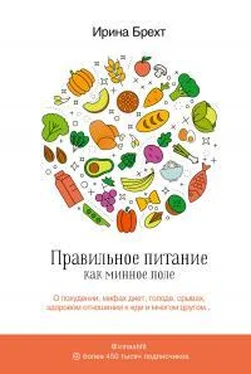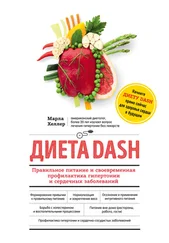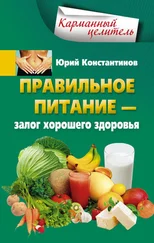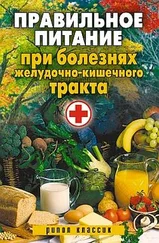63. Fenton TR et al. Causal assessment of dietary acid load and bone disease: A systematic review & meta-analysis applying Hill’s epidemiologic criteria for causality (2011). Nutrition Journal, 10: doi:10.1186/1475—2891—10–41.
64. who.int/features/qa/cancer-red-meat/ru
65. Pierson MD, Smoot LA. Nitrite, nitrite alternatives, and the control of Clostridium botulinum in cured meats. Crit Rev Food Sci Nutr. 1982;17(2):141—87.
66. Honikel KO. The use and control of nitrate and nitrite for the processing of meat products. Meat Sci. 2008 Jan;78(1–2):68–76. doi: 10.1016/j.meatsci.2007.05.030. Epub 2007 Jun 27.
67. https://en.wikipedia.org/wiki/Nitrosamine
68. Va#a#na#nen HK, Ha#rkо#nen PL. Estrogen and bone metabolism. Maturitas. 1996 May;23 Suppl:S65—9.
69. Xiaoming Zhang et al. Sarcopenia as a predictor of hospitalization among older people: a systematic review and meta-analysis. BMC Geriatrics (2018) 18: 188. https://doi.org/10.1186/s12877—018—0878—0
70. У. Мак-Мюррей. Обмен веществ у человека. C 268–271. Издательство МИР, 1980.
Часть 2. Глава 8.
1. Lichtenstein AH. Dietary fat consumption and health. Nutr Rev. 1998 May;56(5 Pt 2):S3—19; discussion S19—28.
2. Van Meer G, Voelker DR, Feigenson GW. Membrane lipids: where they are and how they behave. Nature reviews Molecular cell biology. 2008;9(2):112–124. doi:10.1038/nrm2330.
3. Bourre JM. Effects of nutrients (in food) on the structure and function of the nervous system: update on dietary requirements for brain. Part 2: macronutrients. J Nutr Health Aging. 2006 Sep-Oct;10(5):386—99
4. Pierre Morell and Richard H Quarles. Basic Neurochemistry: Molecular, Cellular and Medical Aspects. 6th edition. The Myelin Sheath. 1999, American Society for Neurochemistry.
5. Bélanger A, et al. Influence of diet on plasma steroids and sex hormone-binding globulin levels in adult men. J Steroid Biochem (1989).
6. Ribaya-Mercado JD. Influence of dietary fat on beta-carotene absorption and bioconversion into vitamin A. Nutr Rev. 2002 Apr;60(4):104—10.
7. Chianese R et al. Impact of dietary fats on brain functions. Curr Neuropharmacol (2017).
8. Gentilcore D. Effects of fat on gastric emptying of and the glycemic, insulin, and incretin responses to a carbohydrate meal in type 2 diabetes. J Clin Endocrinol Metab. 2006 Jun;91(6):2062—7.
9. Lin HC, Zhao XT, Wang L 1996 Fat absorption is not complete by midgut but is dependent on load of fat. Am J Physiol 271:G62—G67
10. Tso P, Liu M. Ingested fat and satiety. Physiol Behav. 2004 Apr;81(2):275—87.
11. Maljaars J et al. Effect of fat saturation on satiety, hormone release, and food intake. Am J Clin Nutr. 2009 Apr;89(4):1019—24. doi: 10.3945/ajcn.2008.27335.
12. Maljaars J, Peters HP, Masclee AM. Review article: the gastrointestinal tract: neuroendocrine regulation of satiety and food intake. Aliment Pharmacol Ther 2007;26(suppl 2):241—50.
13. le Roux CW, Bloom SR. Peptide YY, appetite and food intake. Proc Nutr Soc. 2005 May;64(2):213—6.
14. Mattes RD. Is There a Fatty Acid Taste? Annual review of nutrition. 2009;29:305–327. doi:10.1146/annurev-nutr-080508—141108.
15. Besnard P, Passilly-Degrace P, Khan NA. Taste of Fat: A Sixth Taste Modality? Physiol Rev. 2016 Jan;96(1):151—76. doi: 10.1152/physrev.00002.2015.
16. Jones SA. Physical, chemical and sensory aspects of fat replacement. In: Roller S, Jones S, editors. Handbook of Fat Replacers. Boca Raton, FL: CRC Press; 1996. pp. 59–86.
17. Diekman C, Malcolm K. Consumer perception and insights on fats and fatty acids: knowledge on the quality of diet fat. Ann Nutr Metab. 2009;54(Suppl 1):25–32.
18. Ann G. Liu et al. A healthy approach to dietary fats: understanding the science and taking action to reduce consumer confusion. Nutr J. 2017; 16: 53.
19. Demosthenes B. Panagiotakos et al. Sociodemographic and Lifestyle Statistics of Oldest Old People (>80 Years) Living in Ikaria Island: The Ikaria Study. Cardiol Res Pract. 2011; 2011: 679187.
20. ALISON MCCOOK. Errors Trigger Retraction Of Study On Mediterranean Diet’s Heart Benefits. June 13, 2018
21. Calder PC1, Yaqoob P.Omega-3 polyunsaturated fatty acids and human health outcomes. Biofactors. (2009) 35(3): 266–272.
22. Chowdhury, R., Stevens, S., Gorman, D. et al. (2012). Association between fish consumption, long chain omega 3 fatty acids, and risk of cerebrovascular disease: Systematic review and meta-analysis. BMJ, 345(oct30 3), pp.e6698—e6698.
23. Plourde M, Cunnane SC. Extremely limited synthesis of long chain polyunsaturates in adults: implications for their dietary essentiality and use as supplements. Appl Physiol Nutr Metab. 2007 Aug; 32(4): 619–634.
24. EFSA Panel on Dietetic Products, Nutrition and Allergies (NDA). Scientific Opinion on the Tolerable Upper Intake Level of eicosapentaenoic acid (EPA), docosahexaenoic acid (DHA) and docosapentaenoic acid (DPA) (2012) 10.2903/j.efsa.2012.2815.
25. https://www.nhs.uk/live-well/eat-well/fish-and-shellfish-nutrition/
26. Jones PJH, Papamandjaris AA. Lipids: cellular metabolism. In: Erdman JW, Macdonald IA, Zeisel SH, eds. Present Knowledge in Nutrition. 10th ed. Washington, DC: Wiley-Blackwell; 2012:132—48.
27. Burdg, G., Calder, P. Conversion of alpha-linolenic acid to longer-chain polyunsaturated fatty acids in human adults. Reproduction Nutrition Development, 2005, 45(5), pp. 581–597.
28. Department of Health and Human Services and U.S. Department of Agriculture. 2015–2020 Dietary Guidelines for Americans. 8th ed. Updated December 2015.
29. JOINT FAO/WHO EXPERT CONSULTATION ON THE RISKS AND BENEFITS OF FISH CONSUMPTION (2010)
30. U.S. Food and Drug Administration. FDA announces qualified health claims for omega-3 fatty acids. 2004.
31. Health effects of trans-fatty acids: experimental and observational evidence D Mozaffarian, A Aro and W C Willett (pdf, 248kb)
32. D Mozaffarian and R Clarke. Quantitative effects on cardiovascular risk factors and coronary heart disease risk of replacing partially hydrogenated vegetable oils with other fats and oils. European Journal of Clinical Nutrition (2009) 63, S22—S33
33. R Uauy et al. WHO Scientific Update on trans fatty acids: summary and conclusions. European Journal of Clinical Nutrition volume 63, pages S68—S75 (2009)
34. FAO. Fats and fatty acid in human nutrition (2008) p.17 ISSN 0254–4725.
35. http://50.rospotrebnadzor.ru/rss_all/-/asset_publisher/Kq6J/content/id/1116916
36. Nettleton JA, Brouwer IA, Geleijnse JM, Hornstra G. Saturated Fat Consumption and Risk of Coronary Heart Disease and Ischemic Stroke: A Science Update. Annals of Nutrition & Metabolism. 2017;70(1):26–33. doi:10.1159/000455681.
37. Siri-Tarino PW, Sun Q, Hu FB, Krauss RM. Meta-analysis of prospective cohort studies evaluating the association of saturated fat with cardiovascular disease. Am J Clin Nutr. 2010 Mar; 91(3): 535–546.
38. FAO. Fats and fatty acid in human nutrition (2008) p.14–15 ISSN 0254–4725.
39. Heart and Stroke Foundation of Canada Position Statement: Saturated Fat, Heart Disease, and Stroke (2015)
40. Re-evaluation of the traditional diet-heart hypothesis: analysis of recovered data from Minnesota Coronary Experiment (1968—73) BMJ 2016; 353 doi: http://dx.doi.org/10.1136/bmj.i1246
41. Pimpin L et al. Is Butter Back? A Systematic Review and Meta-Analysis of Butter Consumption and Risk of Cardiovascular Disease, Diabetes, and Total Mortality. PLoS One. 2016 Jun 29;11(6):e0158118.
42. FAO. Fats and fatty acid in human nutrition (2008) p.13–14 ISSN 0254–4725.
43. US Department of Health and Human Services; US Department of Agriculture. Health.gov, Scientific report of the 2015 dietary guidelines advisory committee. U.S. Department of Health and Human Services and U.S. Department of Agriculture; 2015.
Читать дальше
Конец ознакомительного отрывка
Купить книгу












